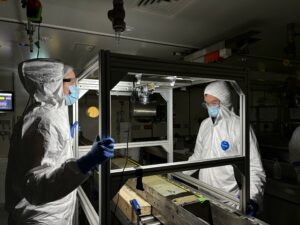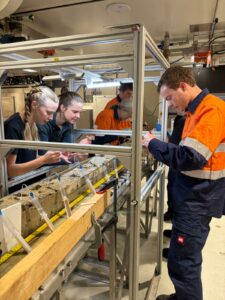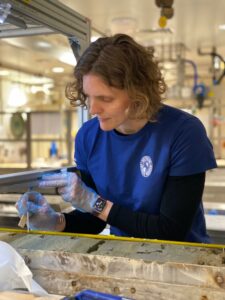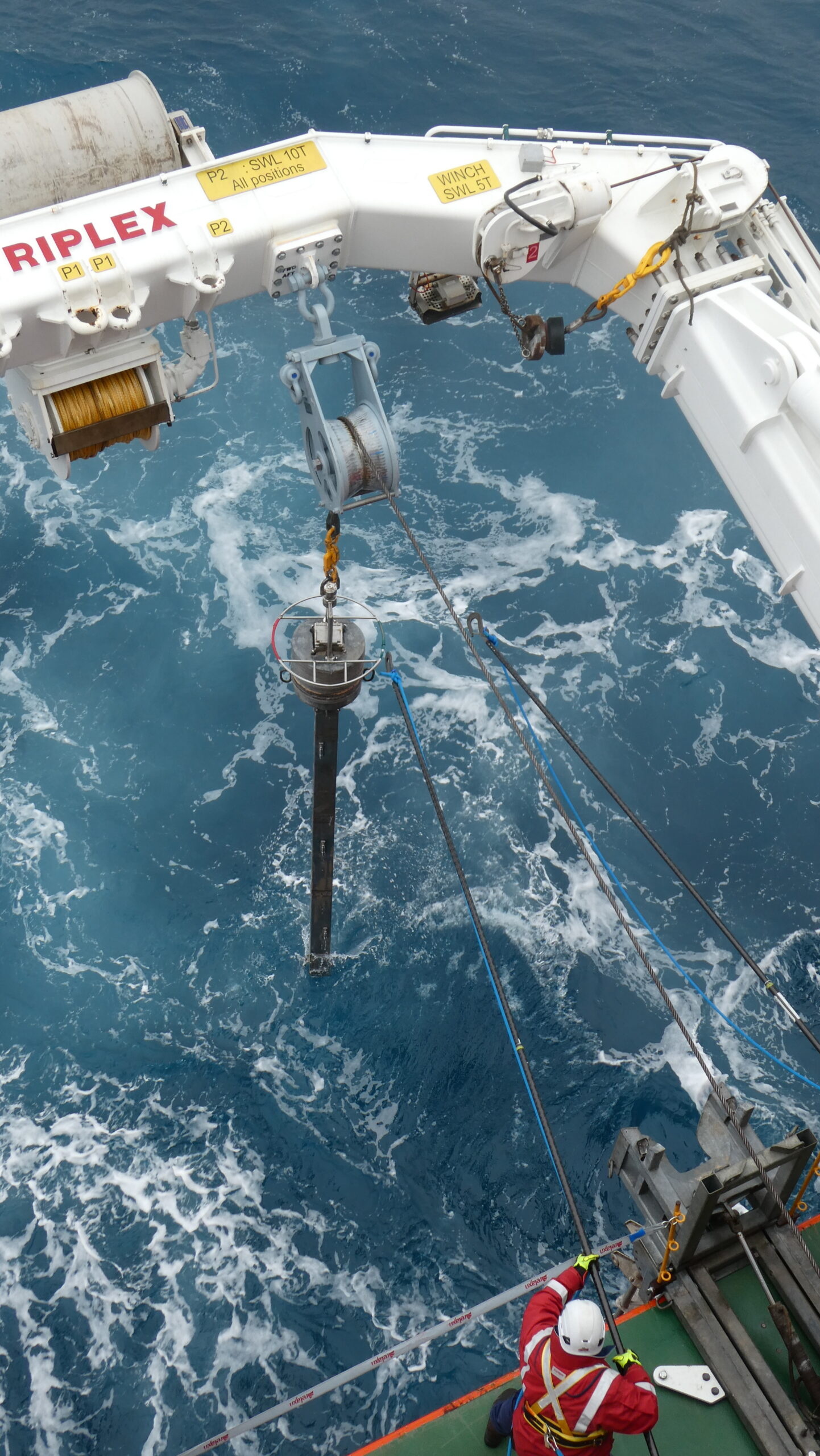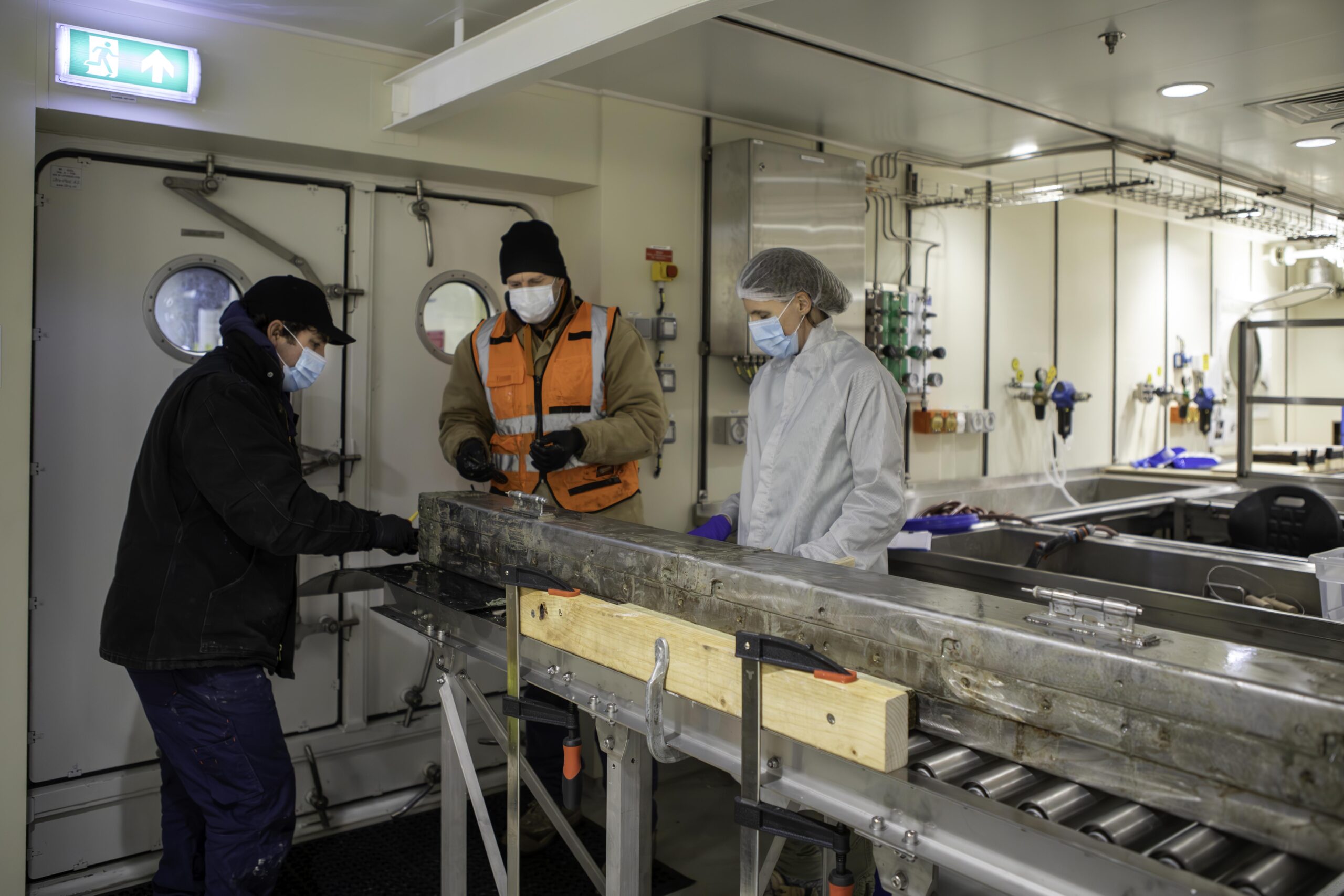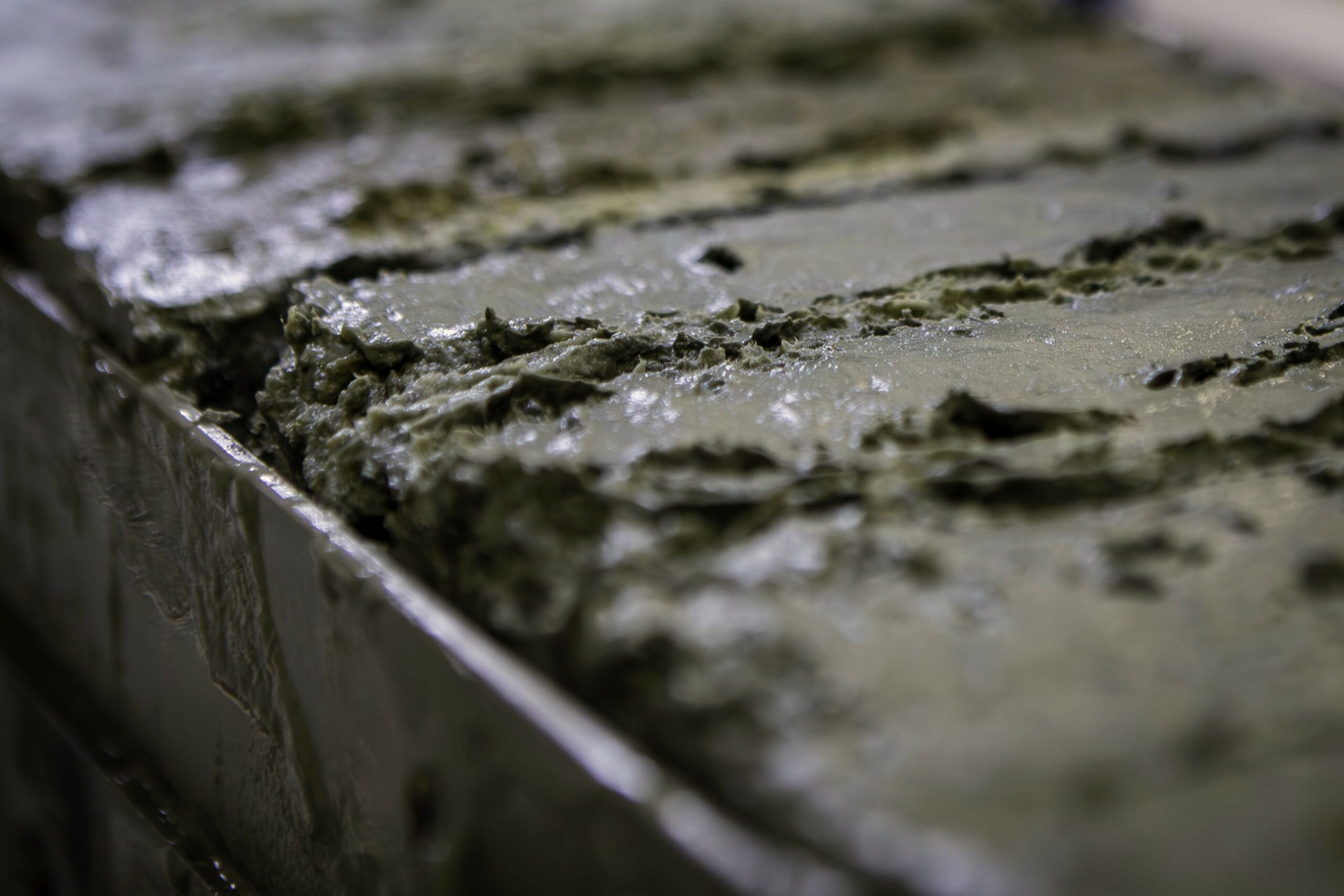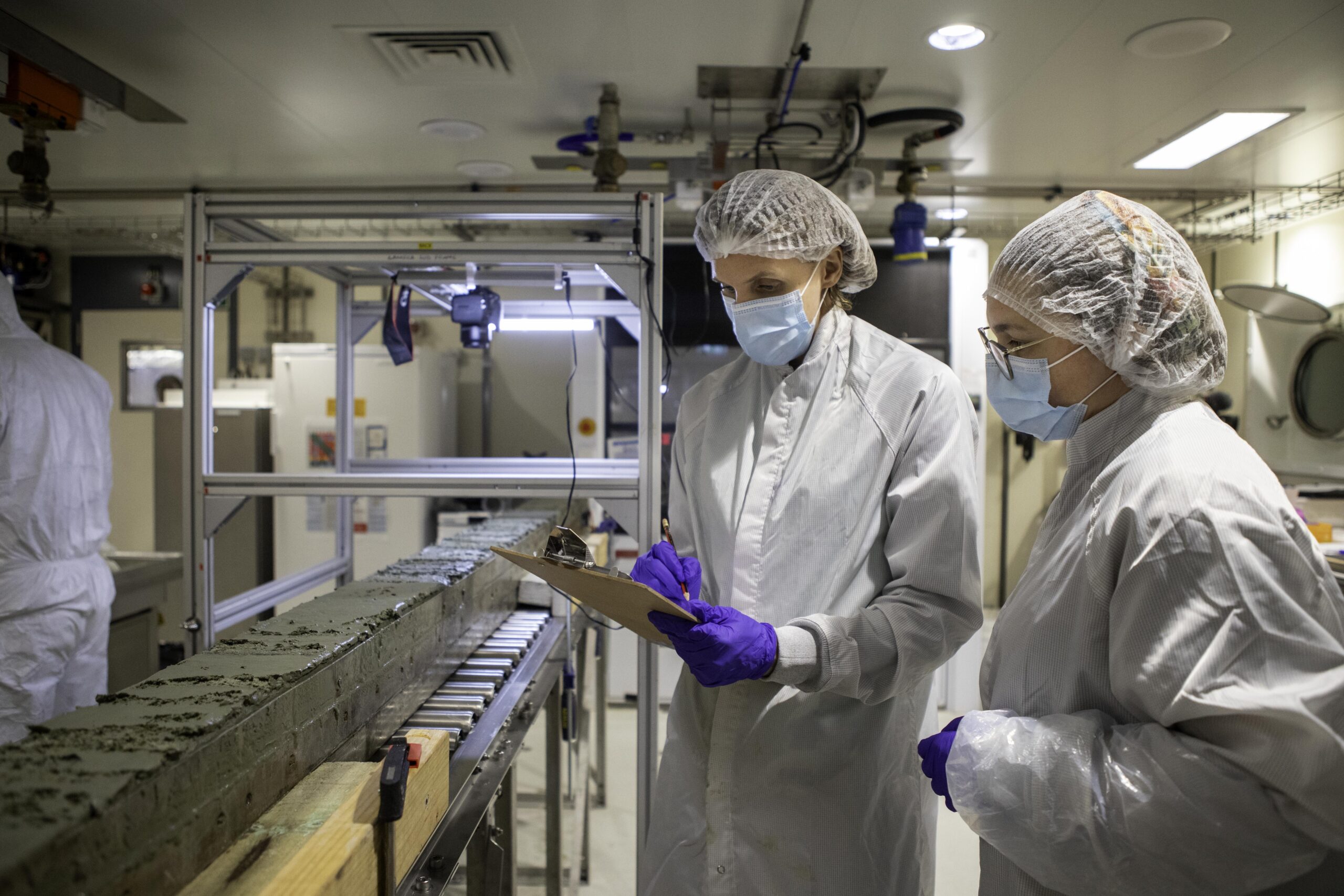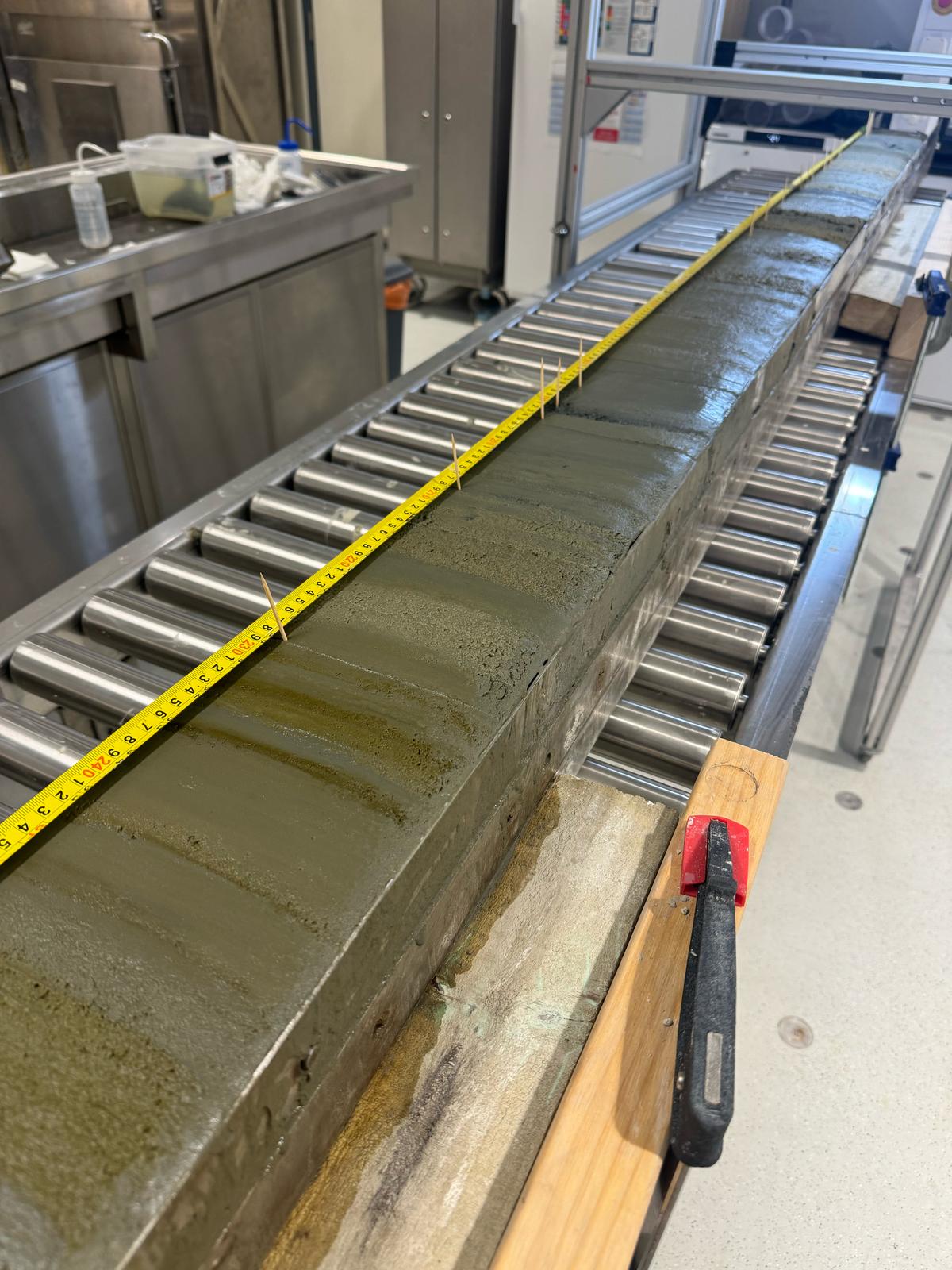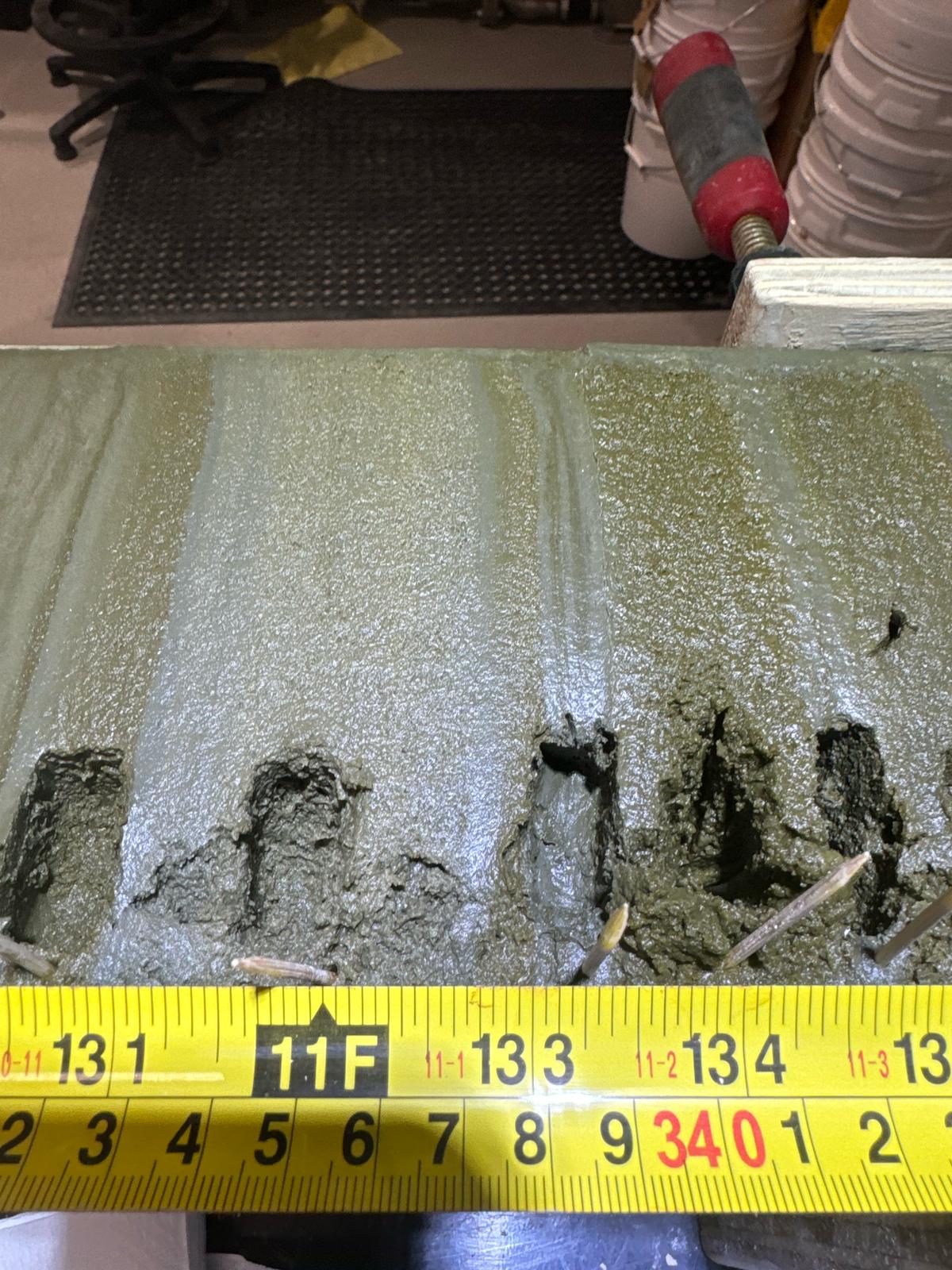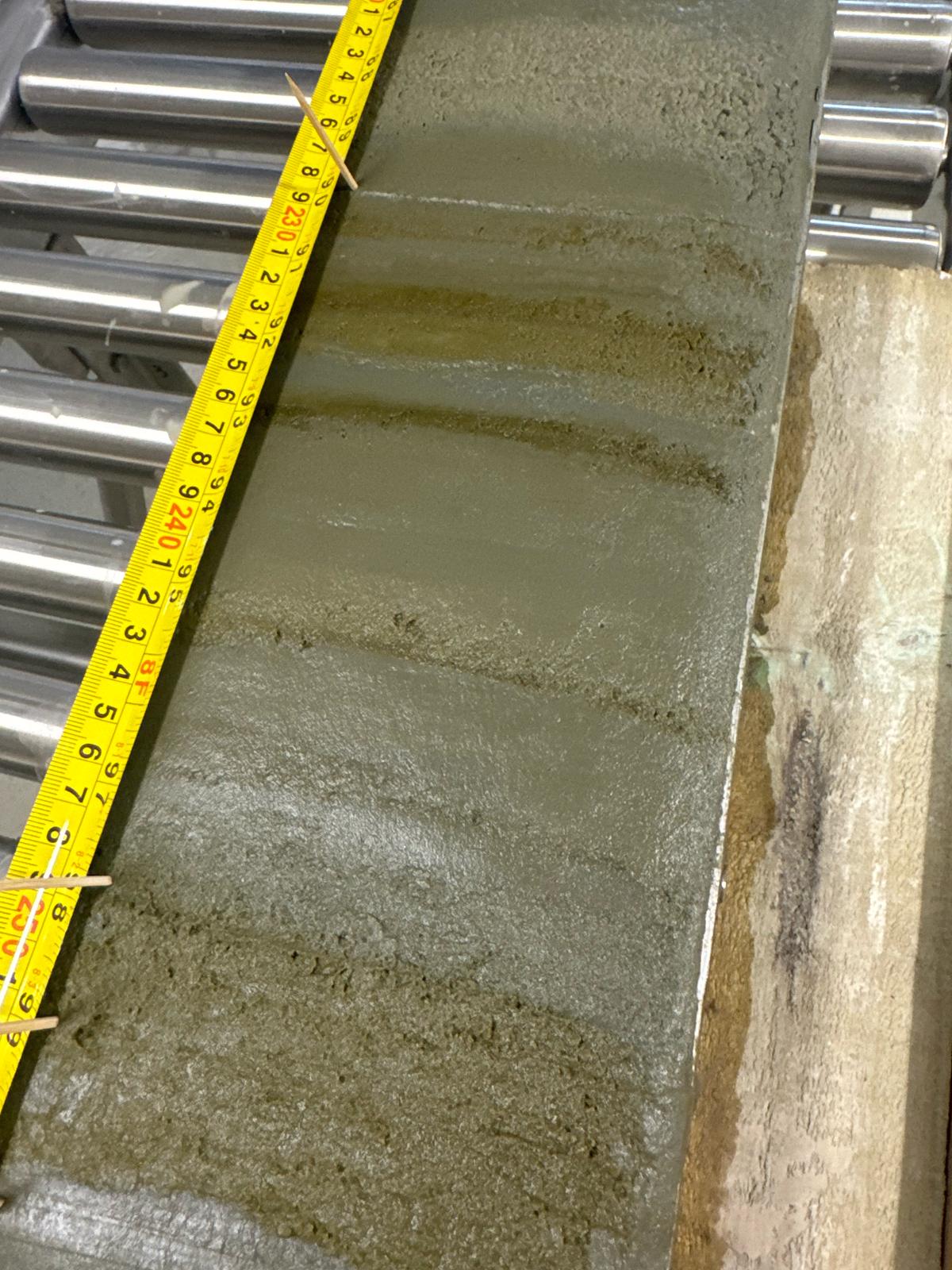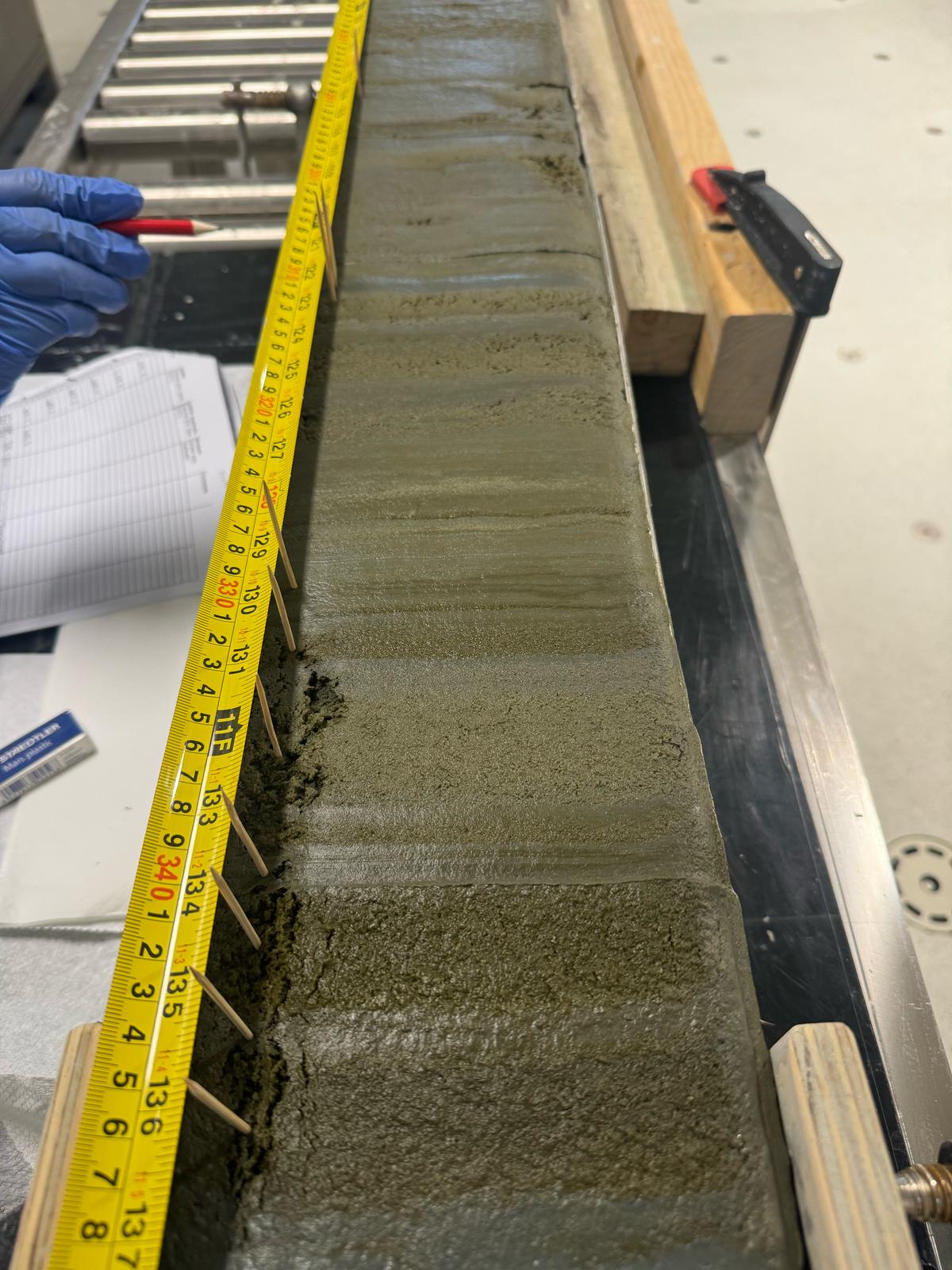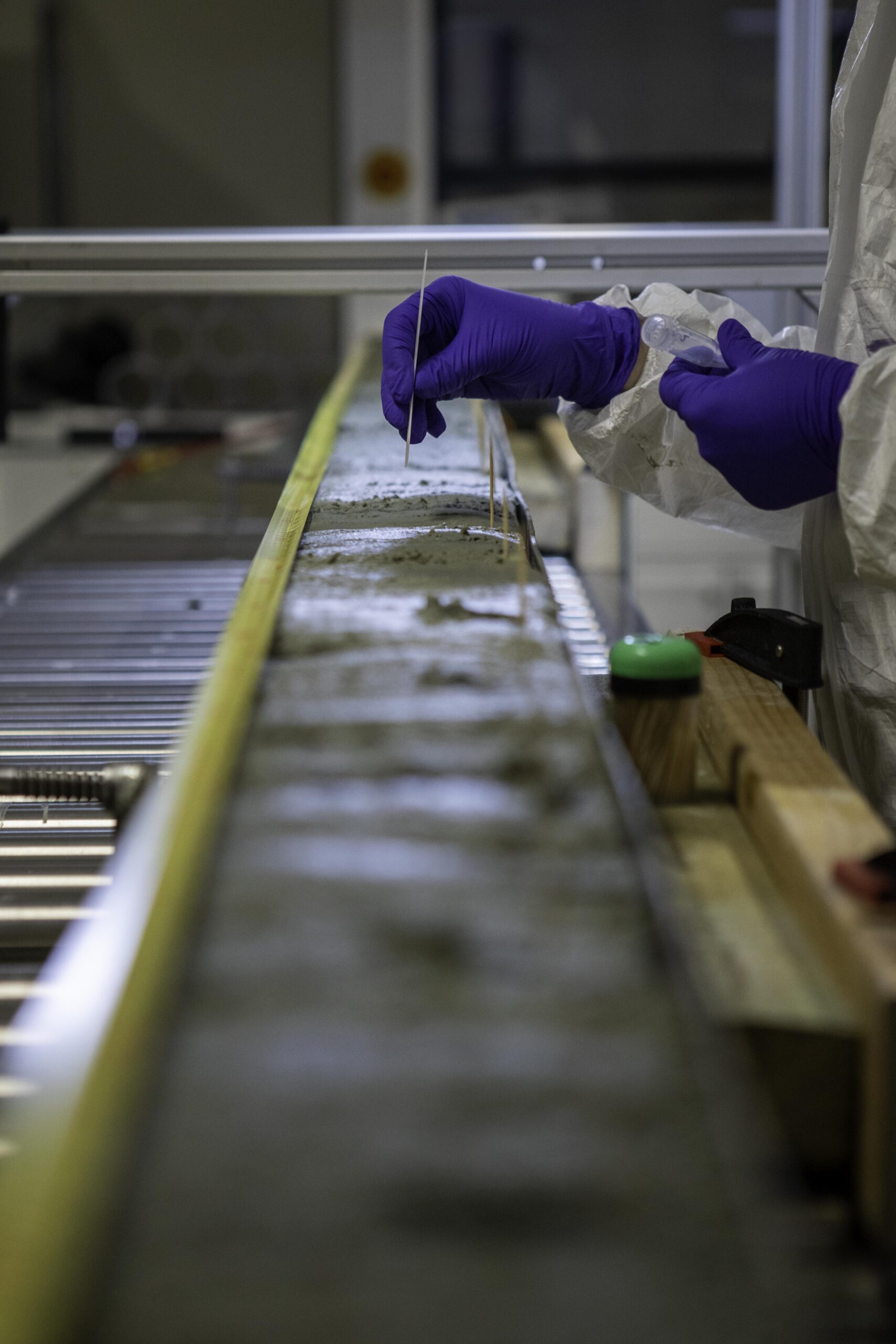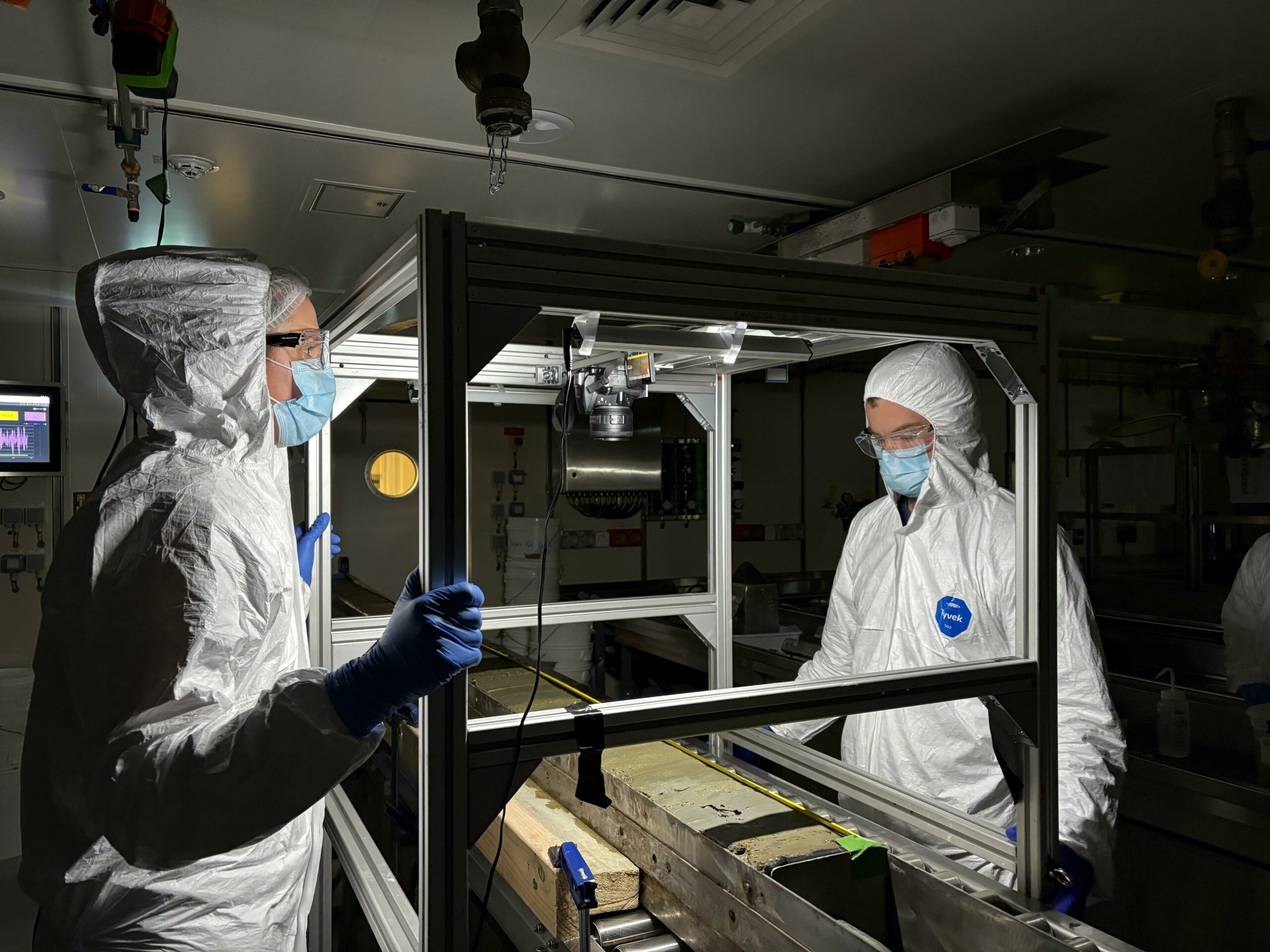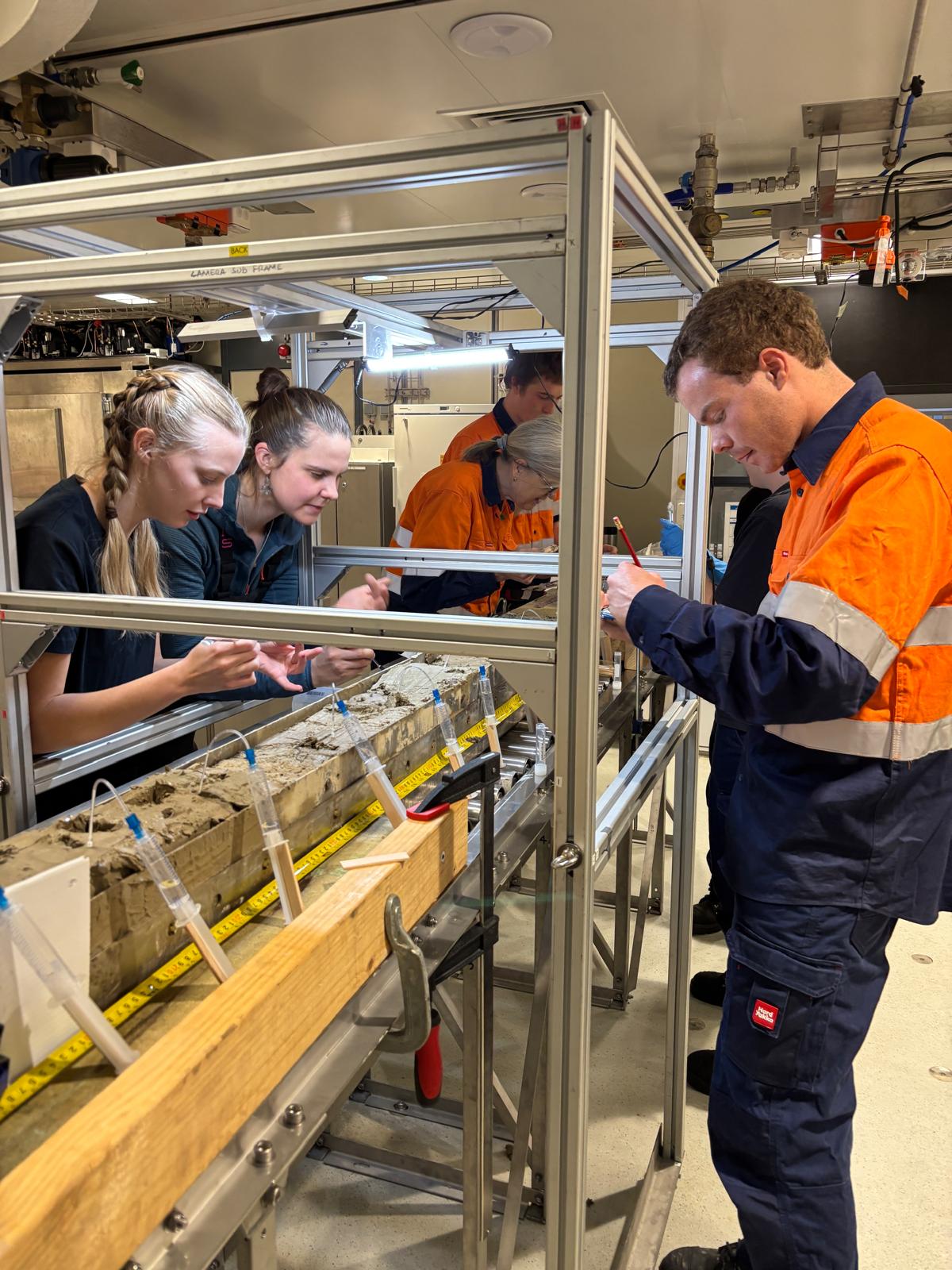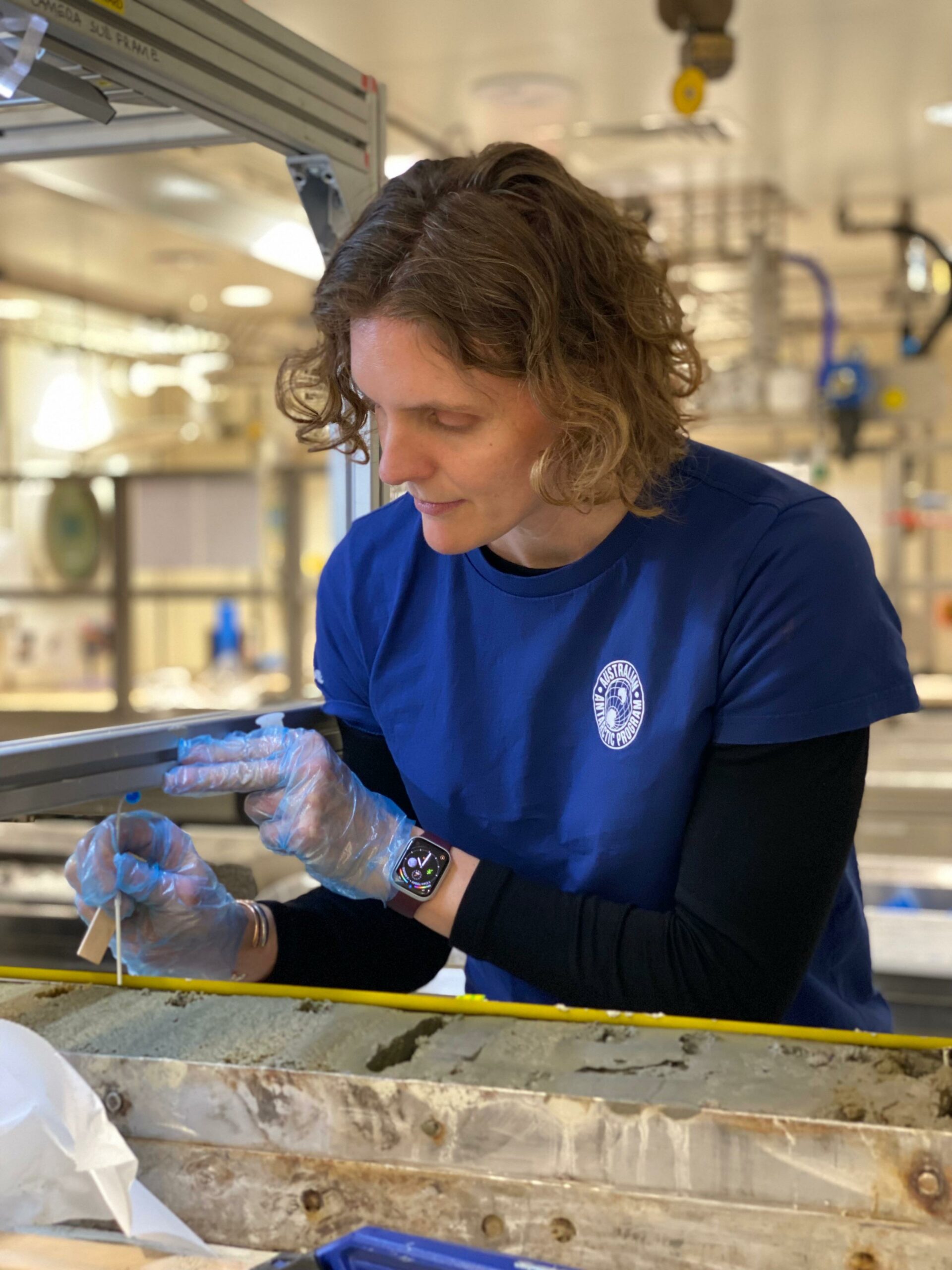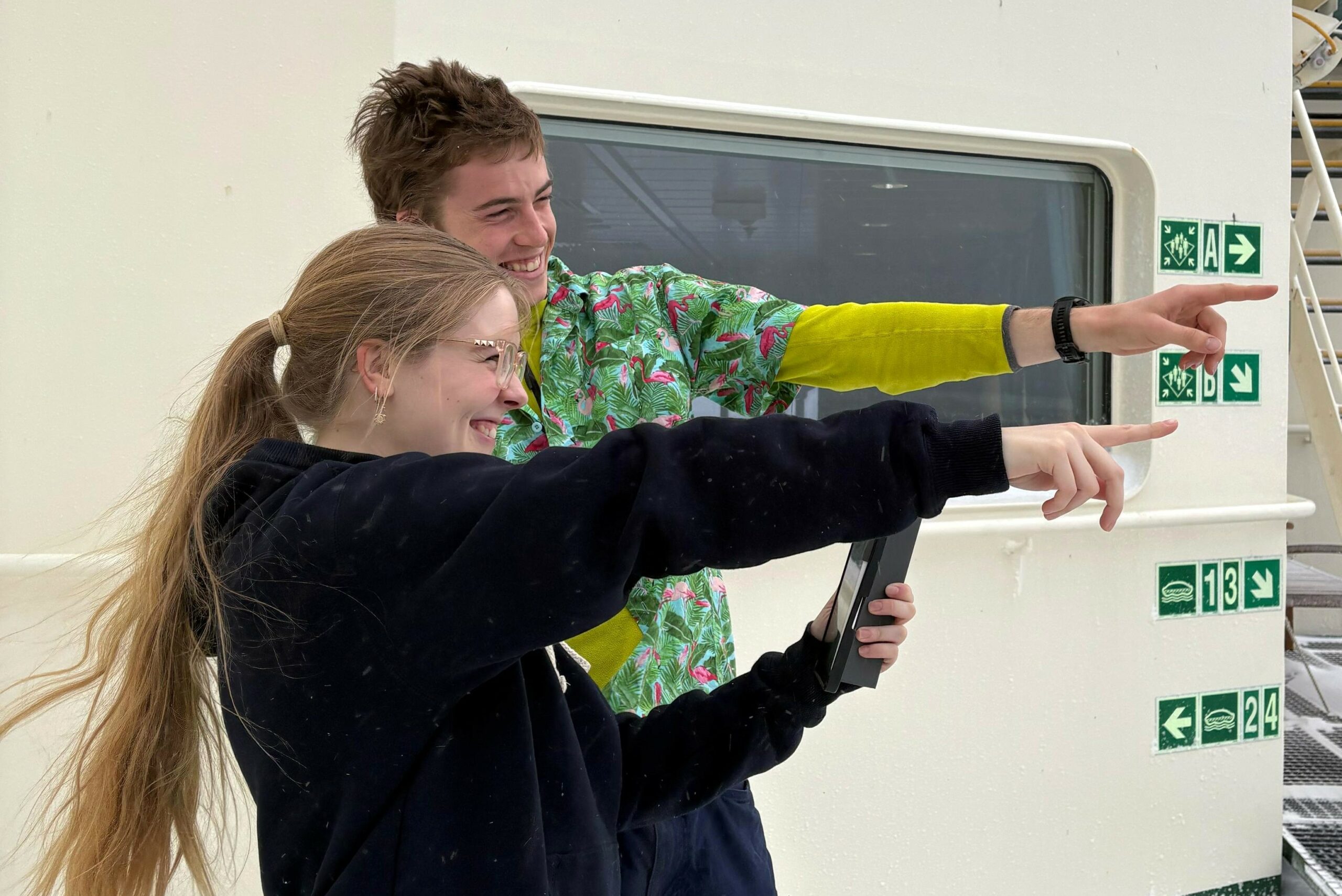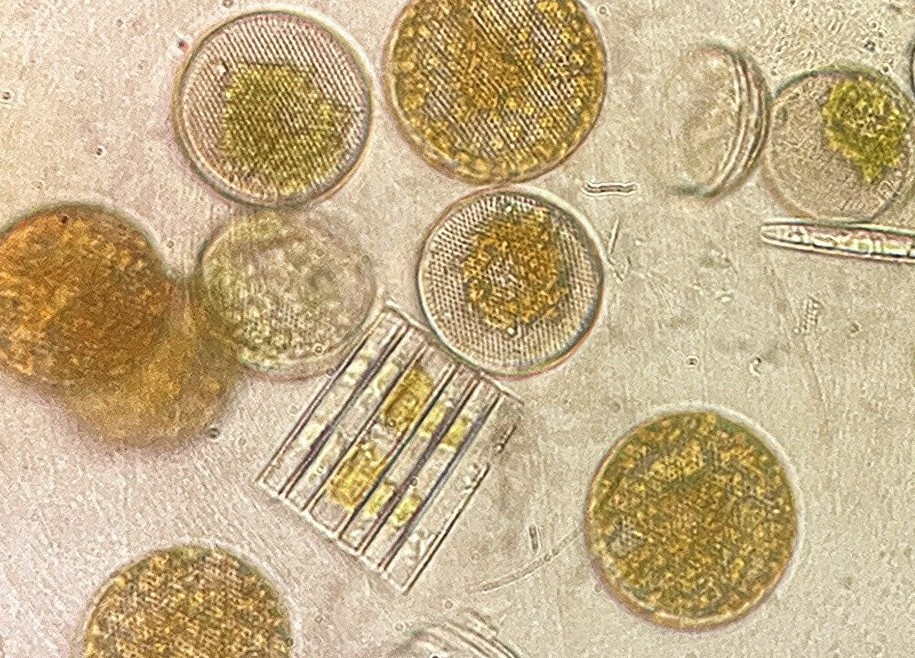Sediment coring: examining an ancient ‘layer cake’
By Dr Taryn Noble
Deep-sea sediment cores have been collected during the Denman Marine Voyage, a first for the RSV Nuyina. These sediments contain a rich record of Antarctic climate change going back hundreds to thousands of years in the past.
We are very selective about where we send down the corer to sample the upper 3 – 4m of seafloor sediment. We use a Kasten corer, a simple, gravity-based system consisting of a square metal barrel with nearly a ton of weight attached to the top.
We work very closely with the hydroacoustic team onboard, who use sound waves to find areas where sediment is accumulating in a consistent manner, rather than being carried away by bottom currents, or jumbled up by large icebergs scraping across the seafloor.
The process of coring is very exciting and nerve racking. Although we make an informed decision about where to core using sound wave mapping, we really don’t know what we will get until the corer is back on deck.
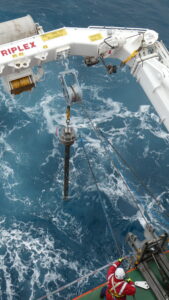

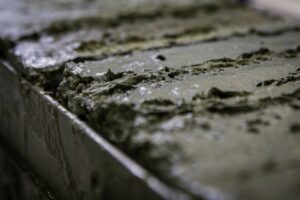
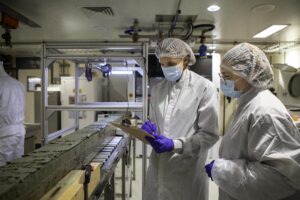
So far, we have been extremely lucky. We have beautiful sediment core records near the Denman Glacier and Shackleton Ice Shelf. At both regions, the sediment cores look like a layer cake, with different shades of olive and grey alternating between diatoms and fine clay and sediment from the Denman Glacier and Shackleton Ice Shelf. Diatoms are algae with ornate glass skeletons which grow in the light-lit layers of the upper ocean during summer, and under the sea ice during the winter. Sometimes we observed larger rock fragments carried by icebergs, like the blue-jade ones (see Kaihe’s blog post ), containing sediment from the base of the ice sheet. These records close to the ice sheet likely record the history of glacier melting, sea ice and biological activity from the last few thousand years.
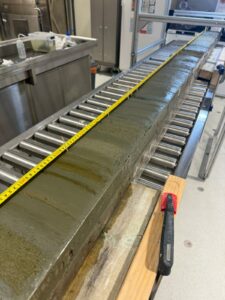
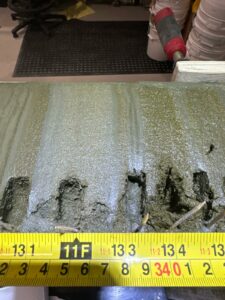
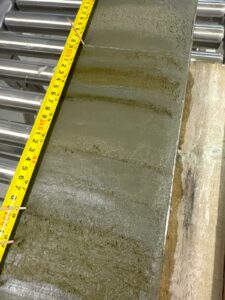
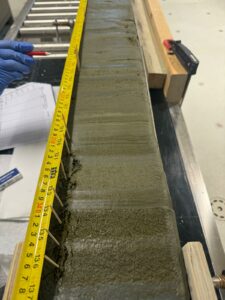
Further away, to the north of the ice sheet, we have collected sediment records of ocean and ice sheet change going back more than 200,000 years in the past. These sediments are very different to what we observe close to the ice sheet because they contain tiny carbonate shells from animals living in the surface ocean (that are distinct from the glass skeletons of diatoms), and larger fragments of rocks carried by icebergs sourced from other East Antarctic glaciers. On these longer timescales, the Earth was on average much colder than the pre-industrial (today the planet is about 1.5°C warmer than the 1800s) and fluctuated between cold ‘glacial’ and warmer ‘interglacial’ climates.
Once back at our home institutions, we will carry out several different measurements to determine how the Denman Glacier responded to periods of past climate warming. By looking at the properties of the iceberg-rafted rock fragments, we aim to determine how sensitive the Denman Glacier is to ocean warming compared to nearby glaciers such as the Totten Glacier.
—
*Dr Taryn Noble (IMAS/UTAS) is a Senior Scientist and Kasten/Multi core project lead for ACEAS on the Denman Marine Voyage

